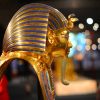Enlightened Princesses
Historic Royal Palaces and the Yale Center for British Art present a major new exhibition at Kensington Palace.
22 June – 12 November 2017
A major new exhibition Enlightened Princesses: Caroline, Augusta, Charlotte and the Shaping of the Modern World explores the lives of three German princesses, whose marriage into the British royal family and wide-ranging interests placed them at the very heart of the enlightenment in progress in 18th century Britain.
The exhibition, which opened at the Yale Center for British Art in February, will be displayed at Kensington Palace between June and November 2017.
While much has been written about the Hanoverian monarchs – the German Kings who famously feuded with their sons and lost control of the North American colonies – the important role played by their wives has never before been carefully evaluated. Now, thanks to new research emerging from a fruitful academic partnership between Historic Royal Palaces and the Yale Center for British Art, their story will be told for the first time.
Three fiercely intelligent, dynamic and culturally curious women emerge from the shadows of history: committed patrons of the arts and sciences, and powerful advocates of ‘Brand Britain’. Their shaping of the monarchy leaves its legacy to our present day.
The three women lived in an immensely dynamic and exciting time, and actively fostered the culture of the Enlightenment from their position right at the heart of the British establishment. Their glittering courts drew in the leading cultural and intellectual figures of the age. At Kensington Palace, Caroline’s drawing room welcomed writers Alexander Pope and Jonathan Swift, scientist and astronomer Isaac Newton – who performed light refraction experiments there – and composer George Frideric Handel, alongside a steady stream of Prime Ministers and international statesmen.
It wasn’t just within the confines of their palaces, however, that the princesses made their mark; Caroline, Augusta and Charlotte made use of the many products of empire – exotic plants, rare birds and wild animals – to create and recast each other’s gardens with imports from the Caribbean, India, Africa, China and Australasia. The Royal Botanic Gardens at Kewstill stand today as a testament to their ambition and skill. From the kangaroos that would have greeted guests to Queen Charlotte’s Cottage – the first to ever appear in England – to the spectacular 10-storey oriental pagoda designed for Augusta by architect William Chambers, their gardens reflected not just the interests of the court, but also the complex geopolitics of the day and the imperial ambitions of the nation.
The three women were each mother to future kings, and took a great interest in education and child-rearing. Over the course of their lifetimes, attitudes to child-rearing changed rapidly, and the princesses became active contributors to the educational programmes devised for their children, seeking to draw them into experiences outside the palace walls.
To reflect the diverse range of interests pursued by Caroline, Augusta and Charlotte, the exhibition will bring together for the first time at the Palace almost 200 objects exploring their stories – including 63 works generously lent by Her Majesty The Queen from the Royal Collection – alongside loans from the Yale Center for British Art and the royal collections of Denmark and the Netherlands. Personal possessions such as Charlotte’s hand-embroidered needlework pocketbook and pastels of the royal children will be displayed alongside artworks and fine ceramics commissioned from some of the greatest artists and craftsmen of their day, illuminating the inner lives of these three remarkable women, and celebrating the public roles they played in shaping ideas of a national identity.
For more information visit www.hrp.org.uk
Poppy Watt


